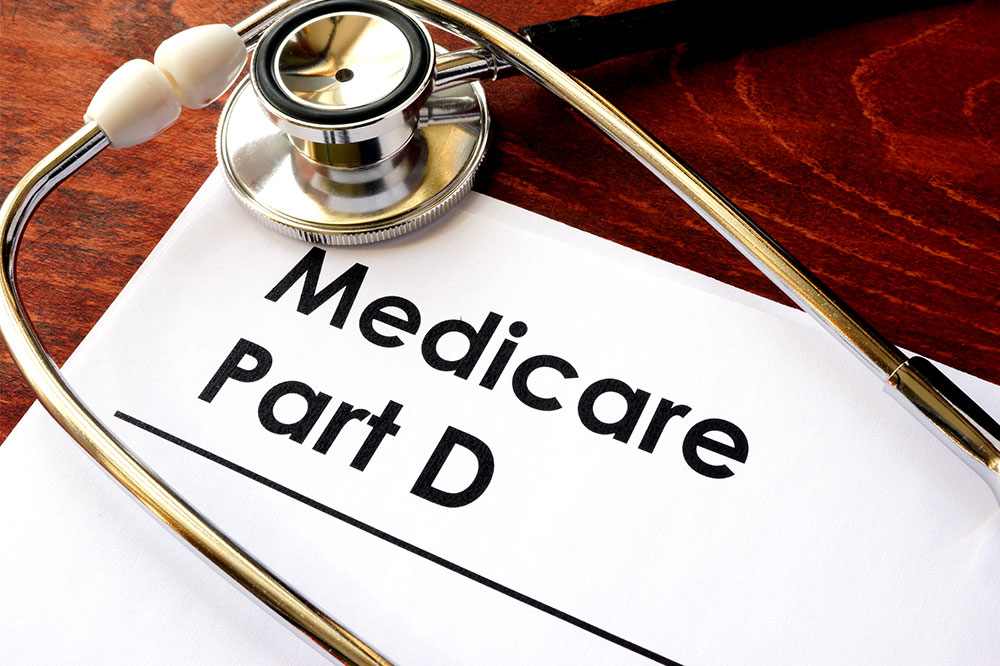
Important elements to know about Medicare Part D
Medicare is a federal health insurance program for people over 65. It is also available for people below 65 with specific disabilities and those diagnosed with end-stage renal disease. Medicare is divided into four parts where Part A covers hospital coverage, Part B covers services from doctors and health experts, including doctor visits, diagnostic tests, and screenings. Private insurance companies offer Part C, and Part D covers prescription coverage.
Prescription coverage under Medicare A, B, and D
Medicare D provides exclusive coverage for prescription treatments, and in some circumstances, Parts A and B also cover prescription costs.
Prescription coverage under Part A
If you are under in-patient treatment in a Medicare-covered hospital or a Nursing Facility, Part A will provide prescription coverage. If you are being treated in an SNF (skilled nursing facility) that is not under Part A, you can get coverage from Medicare Part D.
Prescription coverage under Part B
If your healthcare provider is administering prescription treatments, Medicare part B will provide coverage on the condition that they procure and supply the treatments for you. It also provides coverage for a few self-administered outpatient prescriptions. Part B coverage is limited to prescriptions or biologicals administered through injections or infusions.
Prescription coverage under Part D
Medicare prescription coverage helps you cover the cost of prescription treatments. Some of the prescription treatments conditionally covered by Medicare Part D are:
- Immunosuppressants for transplant patients
- Erythropoietin
- Infusion treatments
- Inhalation treatments
- Injections
- Intravenous immunoglobin
- Oral anti-cancer treatments
- Parenteral nutrition
- Vaccines
Medicare D coverage helps you cover the cost of prescription treatments and protect you from the high costs. There are many conditions under which the above prescription treatments are covered under Medicare D.
Ways to get Medicare Part D coverage
Though Part D coverage is optional, it is advisable to get one once you become eligible for it, as one cannot anticipate when you may need it. Though you can add Medicare Part D coverage later, you may pay the penalty as long as you use the coverage. You should get coverage even if you are not on regular treatment. If you are eligible for Medicare, you are also eligible for Medicare Part D coverage. The plans may vary based on the type of prescription that it covers. The different ways of enrolling in Medicare Part D are:
Join within the eligibility period after purchasing Medicare
You have a seven-month initial enrollment period to sign up for Medicare A or B. This period includes your birthday month and three months before and after the birthday month. Some don’t enroll for Medicare D during their initial eligibility period and may sign up only for Medicare Part A and B. If you want to add Medicare Part D later, you may have to pay a permanent 1% penalty.
Through Medicare Part D enrollment
If you already have Part A or B and want to add Medicare Part D coverage, you can enroll through the Medicare Part D enrollment that happens between April 1 to June 30 every year. If you lose this opportunity and want to make changes, you may have to wait for the open enrollment period.
Through open enrollment
Medicare open enrollment is a window where you can change your Medicare coverage between October 15 and December 7 every year. You can enroll in a highly-rated plan that provides coverage for your specific prescription treatment.
Tips for choosing the right Medicare D coverage plan
- Make a list of your prescription treatments and dosages.
- Use the plan finder tool at medicare.gov, which shows the various plans available in your location.
- Choose a plan that covers your prescription. Ascertain monthly premium costs, the pricing tier for your prescription, and work out total costs.
- Compare costs and ratings of the plans that the plan finder lists for you.
- Choose a plan that provides maximum coverage and reduces your monthly costs on prescriptions.




